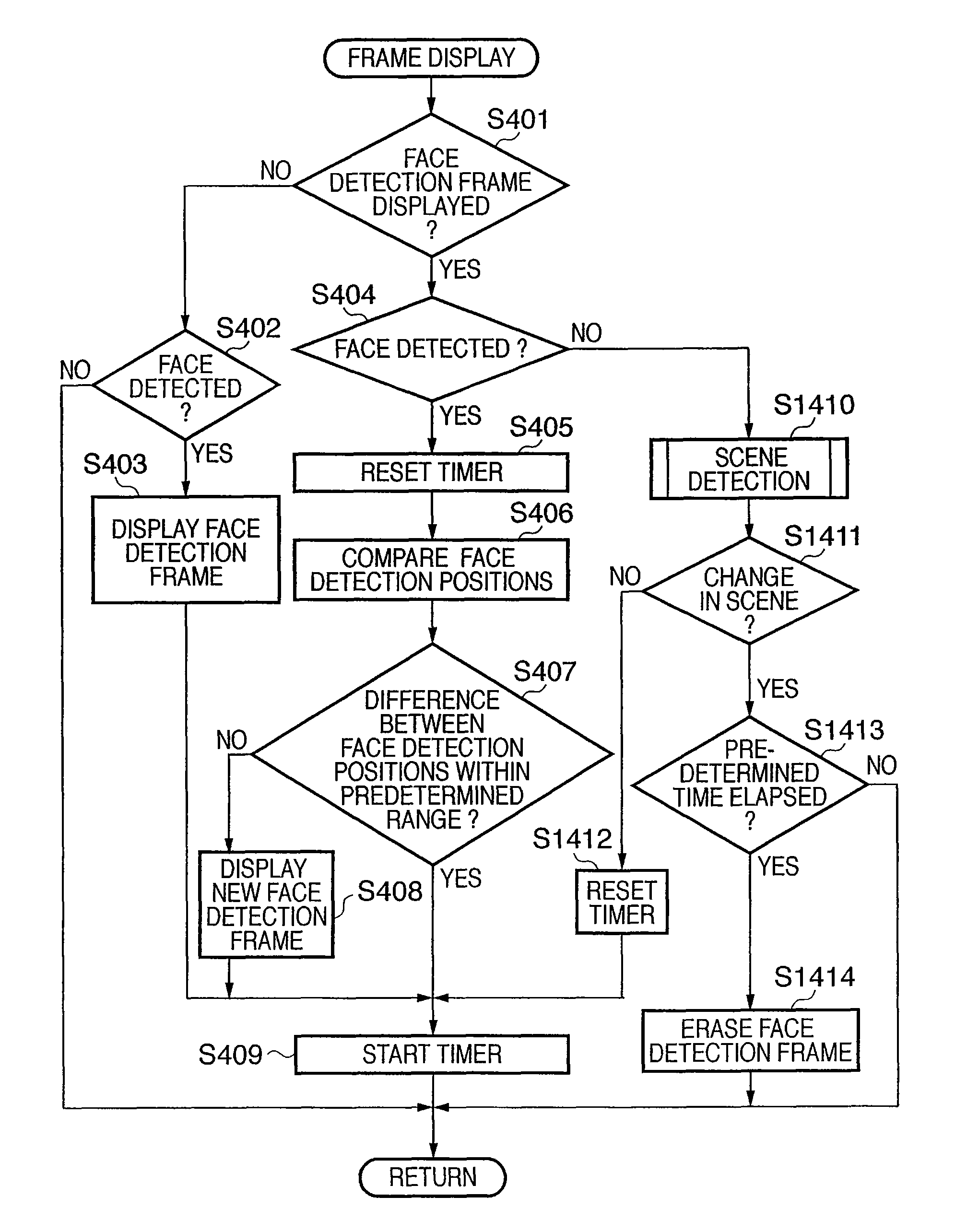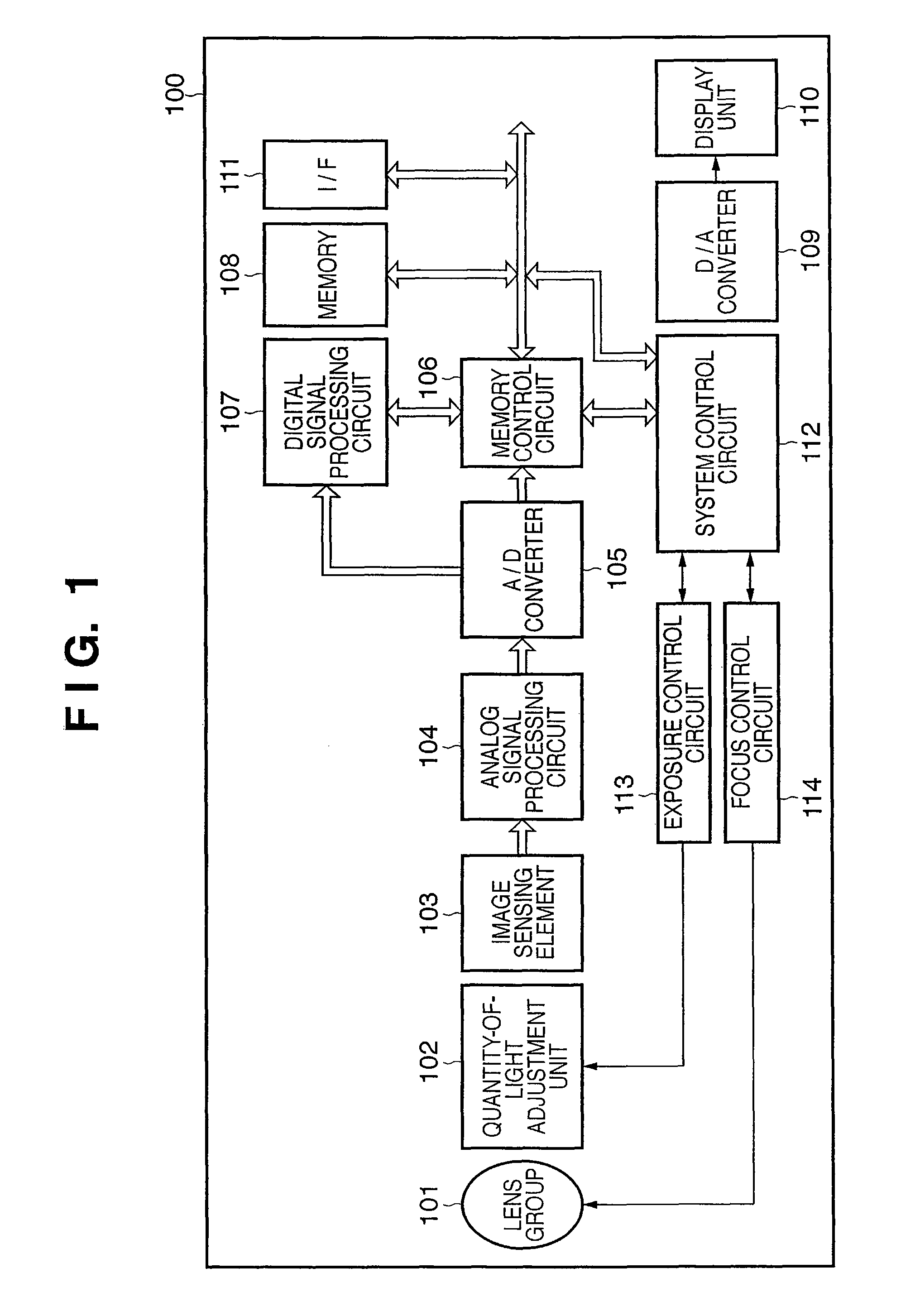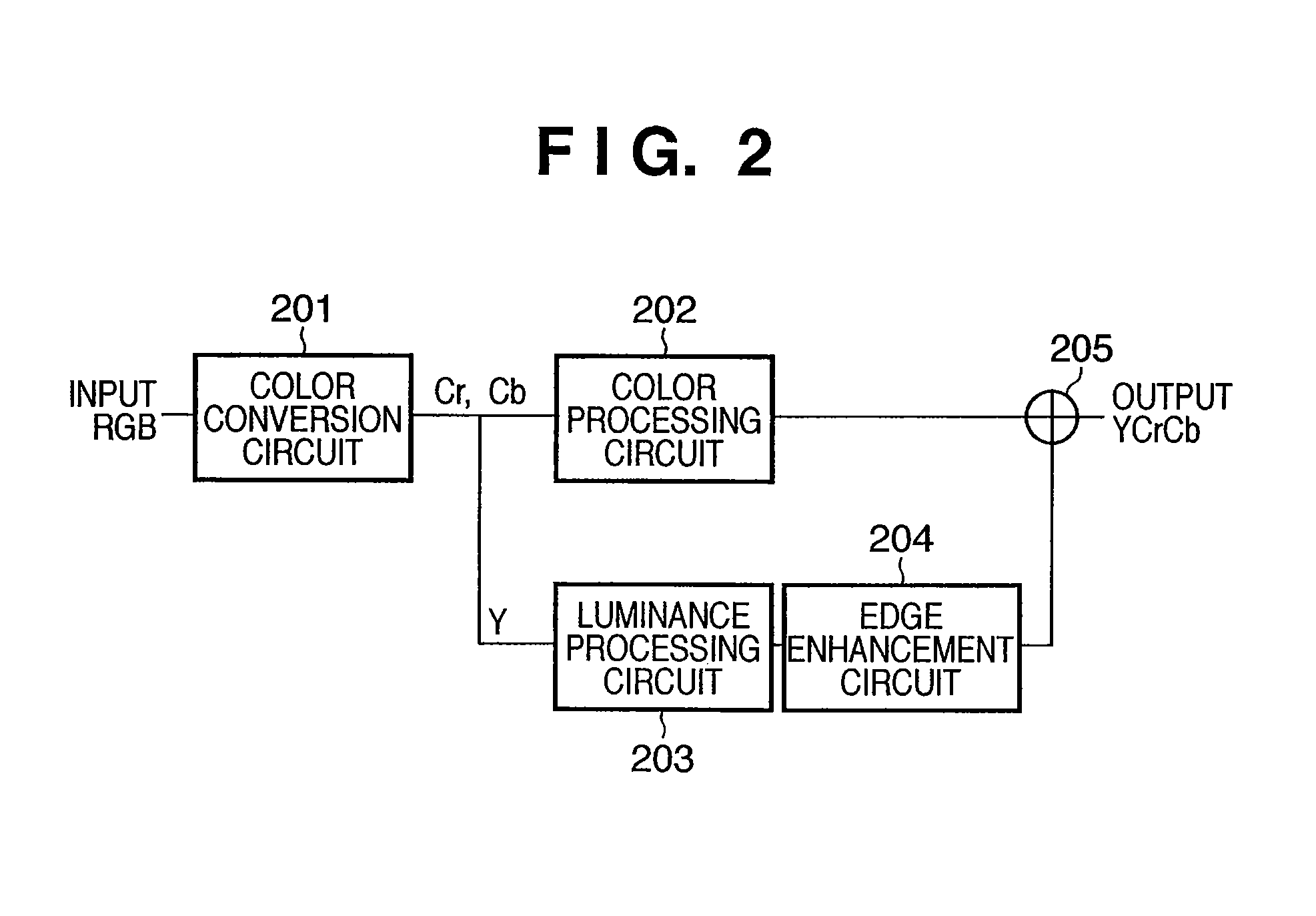Image sensing apparatus and control method therefor
a technology of image sensing and control method, which is applied in the direction of optical radiation measurement, instruments, television systems, etc., can solve the problems of affecting the detection effect of main objects, so as to prevent sudden sharp changes in exposure
- Summary
- Abstract
- Description
- Claims
- Application Information
AI Technical Summary
Benefits of technology
Problems solved by technology
Method used
Image
Examples
first embodiment
[0070
[0071]FIG. 1 is a block diagram showing the configuration of an image sensing apparatus 100 according to a first embodiment of the present invention.
[0072]In FIG. 1, the reference numeral 101 designates an image sensing lens group and 102 designates a quantity-of-light adjustment unit having an aperture device and a shutter device. The shutter device is a two-stage-type shutter. When a shutter button, not shown, is partially operated (for example, depressed halfway) and a shutter switch SW1 is switched ON, the start of such operations as AF (Auto Focus), AE (Auto Exposure), AWB (Auto White Balance) and EF (pre-flash) processing is instructed. Further, when the shutter button, not shown, is fully operated (for example, depressed fully) when the shutter switch SW1 is ON, a shutter switch SW2 is switched ON and the start of a series of processes consisting of an exposure process and a development process is instructed. Reference numeral 103 designates an image sensing element such...
second embodiment
[0141
[0142]Next, a description is given of a second embodiment of the present invention.
[0143]The second embodiment, as shown in FIG. 12, adds a BPF 1305 and a scene detection unit 1306 to the configuration of the digital signal processing circuit 107 described in the first embodiment with reference to FIG. 2. The remainder of the structure is the same as that described with reference to FIG. 1 and FIG. 2, and therefore identical reference numerals are attached thereto and a description thereof is omitted. In addition, the frame display process performed in step S113 shown in FIG. 3A is different from that of the first embodiment described with reference to FIG. 4. The remaining processes are identical to the processes described in the first embodiment, and therefore a description thereof is omitted and a description of the frame display process is given with reference to FIG. 13.
[0144]In FIG. 13, from step S401 to step S409 is the same as from step S401 to step S409 described with ...
third embodiment
[0164
[0165]Next, a description is given of a third embodiment of the present invention.
[0166]The third embodiment differs from the first embodiment in that multiple faces are detected. In addition, and in consequence thereof, in step S202 shown in FIG. 5, the exposure control value acquisition method for the AE control carried out by the system control circuit 112 differs from that described in the first embodiment. The remaining processes are identical to the processes described in the first embodiment, and therefore a description thereof is omitted and the following describes the exposure control value acquisition method for AE control with reference to from FIG. 16 to FIG. 19, showing the state of display of the face detection frame. It should be noted that from FIG. 16 to FIG. 19 represents a continuously sensed scene. In addition, the predetermined time set in the timer is 0.6 seconds, the interval between continuously sensed scenes is 0.2 seconds, and a single face detection r...
PUM
 Login to View More
Login to View More Abstract
Description
Claims
Application Information
 Login to View More
Login to View More - R&D
- Intellectual Property
- Life Sciences
- Materials
- Tech Scout
- Unparalleled Data Quality
- Higher Quality Content
- 60% Fewer Hallucinations
Browse by: Latest US Patents, China's latest patents, Technical Efficacy Thesaurus, Application Domain, Technology Topic, Popular Technical Reports.
© 2025 PatSnap. All rights reserved.Legal|Privacy policy|Modern Slavery Act Transparency Statement|Sitemap|About US| Contact US: help@patsnap.com



